Climate Crisis
Bíborka: Welcome to PUHA podcast, which stands for Performative Unity in the Hungarian Arts, produced for HowlRound Theatre Commons, a free and open platform for theatremakers worldwide. We are your hosts, Zsófi and Bíborka.
Zsófi: Welcome to the episode, and hi to our listeners. So, I would like to introduce first Fanni, who’s here with us. Fanni graduated in Hungarian and Polish philology and multicultural anthropology and theatre studies as a PhD. In 2008, she co-founded PLACCC International Festival of site-specific art and art in public space, and she holds the position of artistic director of the festival. And she also works as a freelance cultural manager and writes theatre reviews.
Bíborka: Then we have Eva Bubla, who is an artist, activist and educator, researcher at the doctoral school of the Hungarian University of Fine Arts. Her works articulate current social and ecological concerns and are strongly connected to the specific environment and community at the boundaries of art and science. Her projects aim to raise awareness on various sustainability challenges in an attempt to catalyze a change. She’s keen on working together with local communities and other sectors. These forms of interactions define if an object, an installation, a performance, a workshop, a discussion, or a festival is born.
Zsófi: Kinga Szemessy was trained as a contemporary dancer and dance anthropologist, and she’s currently a PhD candidate at the Interuniversity Doctor Program of MOS and PLUS Salzburg in Austria. She’s a member of the Freeszfe Society, SZOME Association for Somatic Movement Education, Ziggurat Project, L One, and the co-founder of School for Participatory Arts and Arts Mediation. As she’s also a nature guide, occasional rock climber, furthermore ecosomatic investigator, in the frame of her doctoral studies, she has been looking at and researching spaces that challenge the anthropocentric approach towards participatory dance and performance dramaturgy.
Bíborka: Great. So, in this episode, we are going to talk about the climate crisis and more specifically: How can art or performing arts or performativity engage with this subject? So, to start with, we would like you to give a one-sentence answer to the question: What is the climate crisis?
Kinga Szemessy: I guess the listeners must know that the question which was asked in advance was: What is performance art? And this, we were not fully happy with that question. We got this one instead. Yes.
Fanni: Which is even more scary.
Bíborka: Well, it could be, yeah. We’re going to talk about performance after, but we thought it’s good to have a ground base to understand the subject matter.
Kinga: Okay, I will act like a baby or a kindergarten child. So, climate is an average weather for a territory, and the crisis is an event—or maybe a series of events—that makes me stop and rethink and calls my attention to do stuff in another way. But also, maybe not to get paralyzed but act upon it; how to embrace the crisis. Not a definition but an answer.
Bíborka: Yeah, no, that’s perfect.
Fanni: So for me, climate crisis is two big questions to tackle related to the earth and the environment and the radical change in a negative way of this environment.
Eva Bubla: I could connect here this radical change or kind of danger that we experience in our environment, or in ecological or ecosystems around us or that we are part of, so I would not be able to give a perfect definition of the climate crisis. But this is where I feel... I don’t know... that that’s where I could relate also or tip in. When we think about challenges that are happening, like planetary challenges that are happening in our environment and our ecosystem.
Zsófi: For me, I feel like “crisis” is a word that makes me think of a very momentary thing that is temporary. But for me, this is more about a state, so this crisis is constant state, which is… and I could really relate to the word “challenge”—that this crisis poses constant challenges every day for, I think, everybody. But if we don’t think about it, not everyone thinks about it every day. So, it’s a state of mind and the state of being for the environment and for people.
Bíborka: Yeah, I like what you said about this urgency, but then it’s also a constant urgency. So I think that’s something interesting to think about. And also, it’s something really overall. Sure environment, we coming at in a scientific way, but I think it’s very important for me that it’s a human-induced thing. How we affect the climate as a society, it’s very much connected to our behavior and our life within the landscape and our interactions with the landscape. So, it’s a direct relationship, I think, between big groups of people and their living environment.
What I would like to add to this is that in recent years, I met some artists who use their own body, own presence, but also the audience’s body or the audience’s presence as a tool to observe nature. It can be also in an urban nature, so it shouldn’t be in the middle of the woods or the forest, but it can be in the middle of the city.
Zsófi: Thanks. Which parts of the climate crisis do you engage with, or do you want to engage with, when it comes to your work?
Bíborka: Or how?
Zsófi: Or how, yeah.
Fanni: I can start because... so, I’m a little bit different position than Kinga and Evi because I’m running a festival. I’m not an artist. I never was an artist, and I never wanted to be an artist. So I’m just working with artists. And so, as a festival, for me, as I said earlier, that it’s too big a question. So, what I’m really interested in is how to narrow it down to smaller questions, smaller issues, and how to zoom in to specific areas of this problematic, and how to deal with these questions by means of art and together with the artists as a festival. And how to give a platform to present these artistic projects. So for me, zoom in.
Eva: But I think even as an artist, it’s just such a broad term and such a complex and huge issue that it’s impossible to deal with it in one. So, in social projects, in collaborative projects, it’s always a local issue that we focus on, and that’s, again, zooming in. It can be related to water quality or air pollution, so there are different issues which are part of a greater group of problems or issues, challenges.
Bíborka: And this can happen at different places, I understand, because I know that you work in different countries. So is it important for you to really engage with [the locals]?
Eva: Yeah, it is. And there is always, let’s say, a research process before, so there are different approaches. But what I fancy is to first to have time to understand the location, the problems or challenges or whichever we use, the community—their experiences, their stories—and that will trigger something like some thoughts, which will be formulated in an art project.
Zsófi: So, you start with the community, or how do you...?
Eva: In my case it is, yes, it’s an important part of the process to get to know people. It also can mean different formats. So maybe in the research process and making interactions with them, maybe in certain occasions, there is no possibility for that. But then, I’m coming from a visual art background, but a lot of times, there are performative elements lately related to these installations, or maybe we make a happening. So, there are cases when the, let’s say, communities or groups of people—because also I think the two are not the same—they’re not involved in the research process. But then, when we present the work, it is interactive. It becomes interactive maybe by performative means or participatory. So there are different levels of engagement as well.
Bíborka: Fanni, is it important for you when you produce works or pieces for different festivals or occasions that they have this aspect of community engagement because you also—
Fanni: Absolutely. Yeah, absolutely. So, PLACCC is a festival which is presenting site-specific art and art in public space. But site-specific, very often I add that it’s also context specific or community specific. It’s very, very important, and it’s just becoming more and more important through the years just to give the artist the opportunity to spend more time.
As a festival, it’s also a challenge finance-wise and organization-wise, how to give more time to the artists to really know the local context, local community. And it can be a challenge even if it’s a Hungarian, a local artist. But if you invite a foreign artist, it’s really like how to make them acquainted with the conditions and the community and the context, but it’s very, very important. And also, there’s this very important aspect of ownership. So as soon as you work with the local community, then they feel that they are also, I wouldn’t say authors but owners of the project. So they can just keep it alive for example. I would say it’s an important aspect.
Kinga: Even from my wonderful bio, you could hear that I’ve been busy with participatory art. But also, I got quite exhausted by staying busy with the human relations and always pushing this aspect of activation and how we get together and how we become quite quickly a community, etc., etc. And actually—partially thanks to the pandemic—I started questioning what would be the non-anthropocentric version of participatory art.
I guess I could relate that more to the ecological aspect and not to the climate crisis aspect—climate crisis as an umbrella term or as a concept, it doesn’t do anything with me. However, ecology and interconnectedness does. Maybe, the positive aspect of this whole climate crisis as well and not just a negative one—because I remember from the beginning that it was also mentioned—taking it as an occasion to stop and rethink where we are and slow down. So yeah, temporal change as well. Beside that, I guess all of us, we do our tons of composting and growing our own food and zero waste, etc., etc. And it’s something not fully detachable from our artistic life, from manager life.
Zsófi: And you also mentioned that you’re a nature guide. How does that tie in with your work?
Kinga: I guess it happened thanks to post-journey depression. I know because I spent three months in New Zealand in late 2019 and when I arrived back, I was just super scared by the amount of people and stimuli because in New Zealand, you don’t necessarily meet with too many people—mostly if you live in the south island. And somehow, to overcome that, I joined this nature guide training program. That’s it. Just making a rigor for myself to deal with nature and stones and animals and exhausting walking in the woods.
Bíborka: Can you say more about this non-anthropocentric participation? I’m very curious about what this means.
Kinga: What I find problematic—also because it’s still a heritage from Marxist socialist ideologies—is this push of activation and the push of participation and culture instead of acknowledging and becoming aware that you are part of it, anyway. Same with ecology. You don’t need to become ecological or part of ecology because you are, you breathe. And it’s related to that, so how can we make any certain participatory choreographies or performances that help to realize that whatever they do, they affect?
Fanni: What I would like to add to this is that in recent years, I met some artists who use their own body, own presence, but also the audience’s body or the audience’s presence as a tool to observe nature. It can be also in an urban nature, so it shouldn’t be in the middle of the woods or the forest, but it can be in the middle of the city. But there is some natural environment or not natural, of how to use their presence as a mirror or a tool for the observation of the environment. And it’s a completely other kind of participation, as Kinga said, that you are there, your presence is there, but you don’t really have to be super active all the time. Because also for me a little bit it’s getting annoying this, and in terms of the whole environmental issues, ecological issues, climate crisis, I think it’s a really good approach how to put ourself in this problem also.
Eva: Yeah, what is in my mind: the program that we made last year—actually all three of us were involved in it. Because with Fanni, we had a program last year as part of PLACCC Festival which was called Sensing the City. And there I was, functioning as a curator and Kinga was a participating artist, so this is how it all comes together. And so, why I mention it, because there it was also the approach or the methodologies—how you can use your senses to connect, reconnect, connect, to create a connection with your environment within an urban setting or in an abandoned cemetery, for example. I totally agree with this, that through art projects or artistic practices, I think we can strengthen this relation between human and non-human elements. We can create this, human, I don’t know... no, I don’t say brotherhood because then there is gender. Cut it.
So, on the one hand, by artistic practices or artistic means, we can create this connection or strengthen this connection between humans and non-humans. But on the other hand, I also think—and we have projects, for example, Szabadon Balaton, it’s a collective project which we do with PAD Foundation. And it’s reflecting on the ecological issues, challenges, needs of our lake Balaton. And then again, it’s multilevel because I think the first step is really that you deal with this connection to raise awareness about issues.
But I also do believe that—and there was a really nice conversation where this term was criticized, and that’s why I’m using it a bit cautiously or carefully because it also suggests that there is something from outside that you put into the people’s mind. No, what we do is basically touching what is inside and trying to develop something inside us. And then they refer to this term “biophilia,” which is our innate love and compassion for nature. I also believe when I use this term “art” as a catalyst, that we have a potential here to have an effect on decision-making on a personal level, as well, which is of course not solving the climate crisis or any issues in greater terms. But it can also push, I think, sooner or later decision-makers on other levels as well to make changes. Or at least, this is my wish.
Zsófi: Because we started talking about this now—what is the role of art and performing arts—so maybe we could go into that topic to ask ourselves what you think is the role of performing arts now in the climate crisis or in the environmentalist movement.
Bíborka: I don’t know. You know what comes to my mind? It’s not activism but this Hungarian party uses the pacifist [term], which is not the same scene but somehow, it seems relevant. Making work about the climate crisis is not this forced interaction but to return to something innate and something that has to do with the senses and take time or—
Kinga: I would find it misleading to jump on a wave of guilt that I’m not acting upon the climate crisis or I’m not yet doing anything. As an artist, as I have the power to reach audiences or be an artist at a big festival, blah, blah, blah, I’m going to do that. It’s kind of pretending that you’re able to do a big kind of change because you want.
But with SVUNG group, for example, we started thinking about site-sensitive performances, was rather coming from a desire and not guilt. Because again, just after the couple of lockdowns in the pandemic, we asked ourselves, “Do we want to make this application for this open call, and this and that?” And “No, we don’t want to work in a black box anymore. No, we don’t want to make any digital performance.” So what do we want to do? We just want to walk outside and walk the dogs and lay down and enjoy the sun, etc., etc. How could we allow ourselves that it’s okay to be honest, and use this honesty for making art and through that, encouraging anyone else. Be honest to yourself.
Eva: It’s more like creating experiences, I think. And as I mentioned, I’m from a visual art background. Originally, I studied painting in the first place. So I was a painter until maybe twelve or ten years ago, I think. For me, when I first started to do something about these environmental problems that I experienced—as a civilian, not as an artist—but somehow, it organically appeared in my art, and it was just not enough for me to portray these issues on canvas. That’s how at first, I moved in the direction of installations, and I was that time living in Indonesia where I was experiencing also different environmental problems than here. Much more visible.
And so, I moved into the direction of installations, also because of the context in a collectivist culture. It was just inevitable, and not that I was even rejecting it, to start working with communities because everything works in a collective, communal way. So then I found myself, I’m no longer a painter now. What am I? Okay, I’m doing installations. I’m working with communities, thinking with communities. And then, after a time even that, just because that was also portraying problems. But to me, this is something very valuable that I see in—and again, I’m not a performance artist or I’m not in the performing arts but the kind of hybrid format with performative elements. I feel it has a huge potential and value in these performative practices that you can actually have direct interaction, direct connection, exchange with people—and not only with people.
Kinga: It speaks to me a lot because I was wondering that... in the art world, I think we have this tendency of making virtuosic artworks in order to let our genius-ness shine through the artwork. And I guess this approach that we are talking about, it’s maybe about the withdrawing of the self or this ego. Ecological, ego-logical…
Bíborka: Like eco or ego.
Kinga: Yeah, that’s it.
Bíborka: Wow.
Kinga: And in that sense, thinking of, for example, the vigil in the cemetery. I also realized that sometimes, it’s the withdrawing of the performers, and it’s not any more important what we do or how we appear on the stage, but just let the space do its choreography. So yeah, artists could become curators in a way. And giving the opportunity for a certain space in which, of course, there are problems like how it got abandoned and there’s an illegal landfill and anyway, also trusting in the audience that they will be able to somehow put together the threads and not thinking about them as someone stupid, who are unable to do that.
Zsófi: Can you tell a little bit more about the cemetery project? It really sparked my attention.
Kinga: It’s the bestseller, sexy story, I think, these years.
Zsófi: Really?
Kinga: It sounds so strange, no?
Eva: Amazing.
Zsófi: Yeah, I also thought...
Kinga: There’s an abandoned cemetery in Hidegkut Ofalu in the edge of Budapest, almost in Solymár. and formerly, it was used as a cemetery in the fifties, and now the forest took over. However, on the top of it, there’s an illegal landfill within that area. As for the Sensing the City project, we were already thinking about something with the outside space. And also, there was growing interest, I think in all of us, about death and decay because of all of us, we are materials; these tables and bottles are materials. And what the relationship of a death of a human person and waste, when we just throw something away as it’s not needed anymore. And then, we were thinking about the rituals around death and funerals, and we ended up having this idea to have a twelve-hour sleepover next to the cemetery where there were already some wild animals in the neighborhood.
It was cold, even though it was still summer, but it was pretty cold. It was just a very loaded site of all this mysticism and scariness of the funeral and the cemetery and ghosts, etc., etc. And yeah, first part, it was somewhat organized. We proposed some lecture performances, some games, and there was a repetition of entering into the woods. But then after a while, we also just opened up the program for anyone who was present—and imagine like ten people, maximum fifteen-ish people who were there. What to do? Maybe they know it much better than we had planned.
Fanni: For me, there are three levels of how to relate… well, the question was: What role can art play in this environmental movement? So first of all, I wouldn’t call it “movement” because movement is the Extinction Rebellion or things like this. But for me, it’s a process. It’s a process, a situation where we are all of us. So it’s not a movement, it’s what we have to deal with or relate to. And the challenge, as Evi mentioned.
So, what role art can play in this? As a festival, I think there are three levels, and I will just mention them one after the other. One of them is artistic programming, so what kind of artists we are inviting, how we program, how we present; those kinds of art pieces, which really tackle these environmental questions. And as Evi mentioned, we had a whole program block within PLACCC festival last year, and we wanted to go on with this for another three years or longer or beyond. But we have some grant support through this international or European network called IN SITU for another three years. And then, we hope that we can go on in the future. So really, just to have been in the festival, I have a focus on environmental questions and really emphasize it on a program level.
Another level I would mention is how we organize the festival. We are visible, so I think we have to use this visibility and communicate or advocate to the people because a festival has an ecological footprint. Very often, people just forget that it can be really a big ecological footprint. So, how to try to, I wouldn’t say decrease it—I mean you can decrease your ecological footprint—but also how to be aware that you have it and how to deal with it. So, we work with a company, let’s say, who are calculating our emissions and also, we can just plant trees.
But I think what is really important is not the tree planting, it’s the way that as soon as your emission is calculated, you are more careful; you are more cautious about what you’re doing. And obviously travel, international travel is the highest emission, so you can even avoid printing program booklets or whatever. It’s nothing compared to flights but still. And also, just to ask your audience to come by bike, by foot, by public transport—don’t use cars. I feel this obligation as a festival to communicate all these things to our audience. So, this is another level which, very often, can be connected with artistic programming. But still, it’s another level. And the third one… oh no because it’s connected. So communication and doing actively, that as a festival we have to really actively work on it; how to be more ecological and also communicate this because we are visible.
Zsófi: I’m really curious about this. What was the moment for you when you realized that you wanted to engage with this topic?
Eva: For me, there was—because as I said, that time when I started to deal with it, I was living in Indonesia, and it was just so visible. The environmental problems there first which is visible is the plastic pollution. So that time, I was more focused on that. And maybe I said earlier that more as a civilian. So not as an artist, but then it appeared in my art. Those kinds of artworks, I’m more critical about it from ten years perspective.
Fanni: I couldn’t mention a moment. So for me, it was absolutely a process and, just as Evi mentioned, that it started as a civilian. At home, we started making more and more effort on selective waste—zero waste can never be achievable for us, at least. And then parallel-y, I just started thinking about how to apply all these when organizing a festival. Then I met some artists who did really interesting things focusing on ecological problems. It was more and more, but I don’t think that tem years ago there was so many or fifteen there was not but many projects now. Obviously, there was some but not so many. It’s just smoothly happened through the years.
Kinga: For me, definitely not a moment but a period in time. Started probably in New Zealand because there were too many things that I couldn’t understand culturally and mostly referring to the Maori culture and cosmology. And just reading about that and learning just bits and pieces of their language. And how, for example, as many other Indigenous languages, they use the same word for “land” and “placenta” in Māori, and what does it do with my thinking? And what are the words in Hungarian or in English that we use? Yeah, so that was one thing.
And another one, right after that, was the pandemic. I started doing some weird solos for cats in windows. Because we could only do these five-hundred-meter walk around our homes, and they were just there in the window looking at me, and... I don’t know... I had to entertain myself. And the end phase of that was probably the Ziggurat project which was happening on the rocks in a quarry in the Buda Mountains at Kecskehegy because that was also just kind of insane, like: “Okay, I’m going to the woods to climb on rocks and make a performance there, and this is my job while everyone is at home being depressed of the lockdowns and everything.”
But also, the performance state that it put me in was very curious. I think I’ve never experienced before that this much dissolving of the self because with all the safety measurements and with all the porosity of the rocks, I just had to be a hundred percent present all the time. So, I couldn’t make up a character. I just couldn’t be a big artist there with a show expressing any kind of idea behind it. Just be present.
Well, the question was: What role can art play in this environmental movement? So first of all, I wouldn’t call it “movement” because movement is the Extinction Rebellion or things like this. But for me, it’s a process.
Zsófi: I’m interested about you, Bíborka.
Bíborka: Oh wow. The ice cream licks back, as they say. I also think it’s a process. I would go as far as... I grew up next to the Matra Mountains, and my grandparents moved there because I was born there. And they had this little house with a garden, and with my grandpa, we planted this garden with all these fruit trees and plants and raspberry bush and everything. And throughout the years, it started drying out, and it started dying, this garden, because there’s this Matra power plant, which is for their digging. They actually mine really bad quality coal, so it’s not even worth the limit. But they have to take out the water from the land so that they can maintain their landmines.
So basically, the whole area started drying out, and a lot of farmers lost their living. And also, our garden started dying, and my grandpa would also point at this power plant. And sometimes, there were these huge yellow clouds, and then he would be like, “Look, they’re messing with the filtering again. It’s not lawful. They’re polluting the environment. This is pollution, this is really bad for us.” And some days, that would happen.
I really love my grandpa, and I think he was telling me this as a kid and I was just really angry. I remember I was like, “Why are they doing this?” It’s like, it is just this visceral thing. And then we organized this festival with Zsófi (Climate Change Theater Action Budapest), and I went to this really special high school where the focus was sustainability, and we talked about sustainability on a lot of levels. So, that was a more concrete kind of learning about this and that.
Zsófi: For me, it was a very specific thing, I think. Not even a process, but it just hit me once because it was more like a contrast. Because I spent my childhood in Hungary, mostly, and my grandma had a garden in the north of Hungary, and it was just normal for me. And then I finished high school, and I moved to America. Then I had a car which I was driving alone and that moment in the mornings as I was driving to university: I’m in the car, I’m driving alone, and everyone else is doing that around me. And that was the moment when I was just… okay, I was in America, so, I started to take courses in sustainability and engage with it on different levels. And then later on, as I was practicing theatre and performing arts, I got into it more on that level.
Bíborka: When I studied also in America, in the U.S. and, well, I had a car because I lived in the countryside and there was no public transport. There was no way to get around, and the sheer irony of... I was studying dance and performance, and we were making this project about sustainability and connecting with the land and going out into the field and everything and—
Fanni: Jump into the car.
Bíborka: Yes, exactly. We went from the school, got into our own cars, took our own cars to the field, and then did the dance project. And I was like, “This is not right. Something is off.”
Zsófi: This is usually our kind of closing question: What are some inspirational artists for you or that you would like to share with us?
Bíborka: This is a very selfish question. We want to just know about some cool artists that we can also check out.
Eva: For me, there is a group of Indian artists and farmers who are very inspiring. I met them in 2016 when I lived in India for some months, and it’s called Gram Art Project. I had a shorter collaboration with them, so I could have the possibility and luck, also, to work with them. They live in a tiny village in the middle of India, in Central India called Paradsinga. And that time, we were there with a project, which was researching agricultural practices and land use and all the environmental problems that are caused by certain practices. When I joined them, they had this project called Grow in India. It makes more sense for an Indian because the slogan of their prime minister is made in India, so it’s really [pro-industrial]. But India is an agrarian country, and there are a lot of problems in agriculture.
It’s very depressing for the end of this talk but there are, each year, really high numbers of farmers committing suicide because they’re finding themself in debt, and as their land quality is degrading and then the crops fail and so on. So, one thing that they do, they do performances and also community art practices. And they also moved into this village as a collective, and they started a community project with them. They turned a plot into a zero-budget farm—that’s how they called it. What you need to know is that there is monoculture. Genetically modified cotton is growing in almost all the farms in that area. As I said, the land is of really poor quality. And what they did is they converted this farm into this organic zero-budget farm. We made the fertilizer the... what is it? The send away the pests? Pesticide?
Bíborka: Pesticides.
Eva: From materials that we found around the farm in the village, so cow dung and fruit pulp and so on. And we also planted the land art installation which was from leafy vegetables. It was a portrait of the prime minister with the writing, “Please dear prime minister, grow in India.” There was a public letter also sent to him. Here I was more joining as a volunteer. It was their project, but we had a performance with one of the sisters because there are two sisters in this project.
To me, one of the most shocking and important performance of Shweta Bhattad, who is one of the founders of this Gram Art Project, is that basically, as I said about the suicide, she buried herself for a couple of hours in a coffin underground, raising awareness or calling the attention on this problem. So, there are quite shocking art forms that she uses but also, there is a very practical level that—like, we grow an art installation, it’s from leafy vegetables. You can harvest it; you can eat it with the people who work on the farms. This was then seven years ago. I still have contact with some of them occasionally, not regularly, and guys who had no vision or they had no options where to grow but now, they’re studying at university. So on so many levels, their project is inspiring me as an art form, as it’s how it is affecting people and the land.
Fanni: I’m in for “inspiring.” Again, it’s a strange word because I can be “inspired” as a programmer and just invite them. I’m not a creator and I won’t create. [I’m] inspired by other artists but obviously meet an artist who’s inspiring. Then, I just invite them to create something here.
Kinga: Don’t assume that I have big answers. Now, I realize that I’ve just Googled this morning “eco art” and “environmental art,” so I don’t have too many examples or references in mind. Whenever there was a project in this realm going on or about to happen, I was consulting with friends, mostly, who are somehow with the same interest. And I can recall the names, but one of them is Judit Domotor and Arno Bundel. They are a couple former schoolmates of mine. They live next to Paris, and one of them is working more with flora, and the other one with fauna, or animals and plants. And another friend from Italy, but we’ve been working a lot in Colombia together. She was called Sinaski Abo Kampo. So yeah, precious friends and not necessarily the projects that they are at the moment doing.
Zsófi: And just one last question…
Bíborka: Maybe not.
Zsófi: Okay.
Bíborka: Okay, well then, we survived. I’m looking forward to seeing the projects you mentioned, and they all seem really cool.
Zsófi: Yeah, absolutely, and thank you for joining.
Fanni, Eva, Kinga: Thanks for having us. Thanks. Yeah, yeah. Thank you for inviting us.
Zsófi: This has been another episode of the PUHA podcast. We are your host, Bíborka and Zsófi. This podcast is produced as a contribution to HowlRound Theatre Commons. You can find more episodes of this series and other HowlRound podcasts in our feed on iTunes, Google Podcasts, Spotify, and wherever you find your podcasts.
Be sure to search HowlRound Theatre Commons podcasts and subscribe to receive new episodes. If you loved this podcast, post a rating, and write review on those platforms. This helps other people find us. You can also find a transcript for this episode along with a lot of other progressive and disruptive content on howlround.com. Have an idea for an exciting podcast, essay, or TV event the theatre community needs to hear? Visit howlround.com and submit your ideas to the commons.

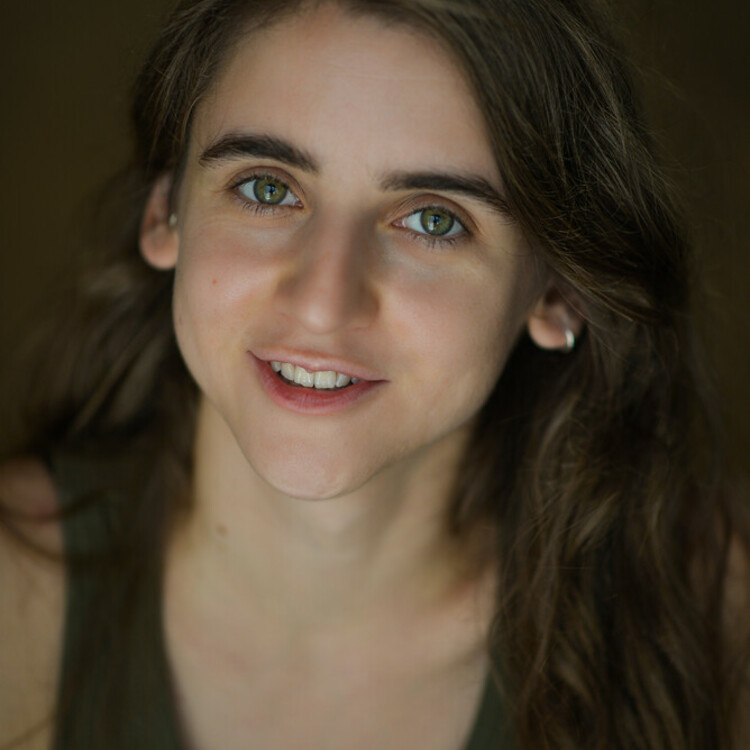
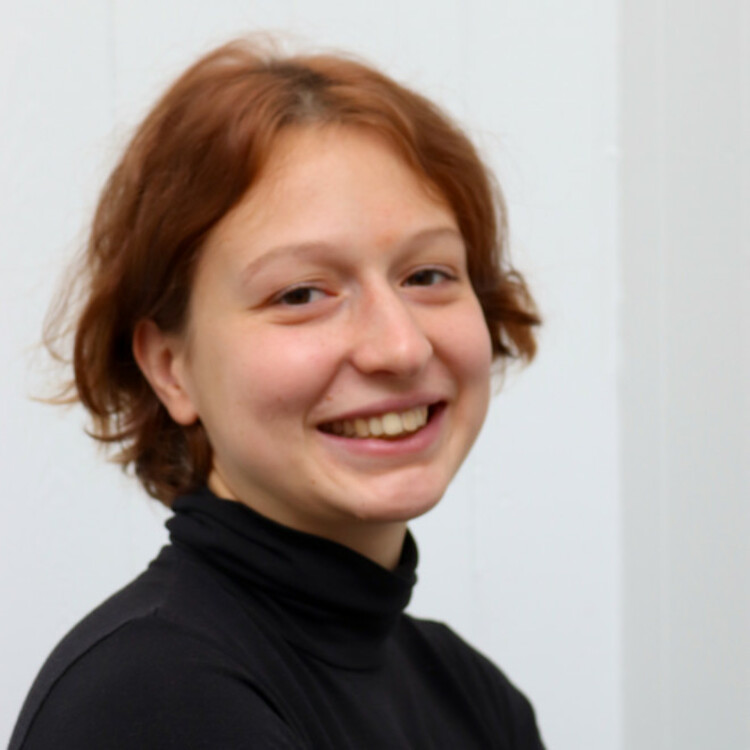
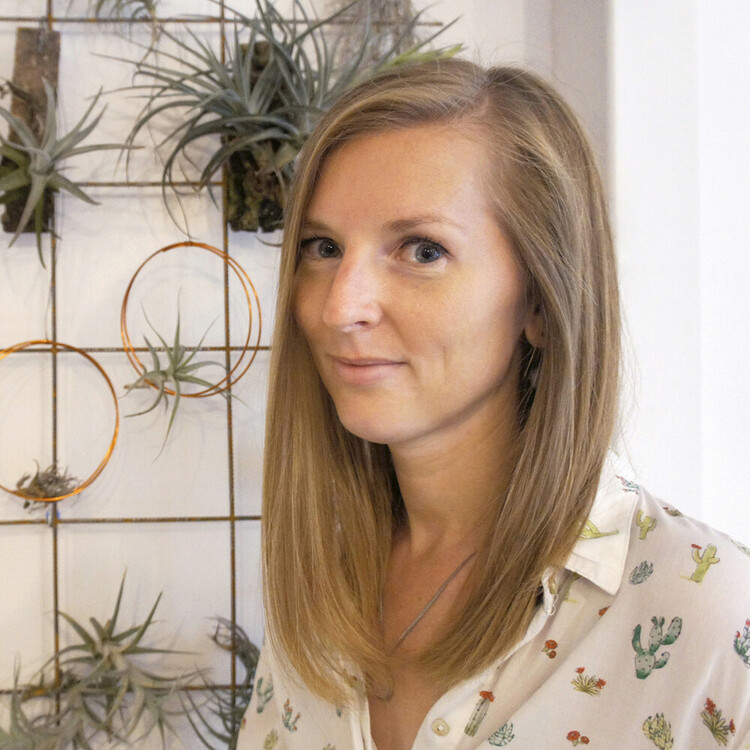
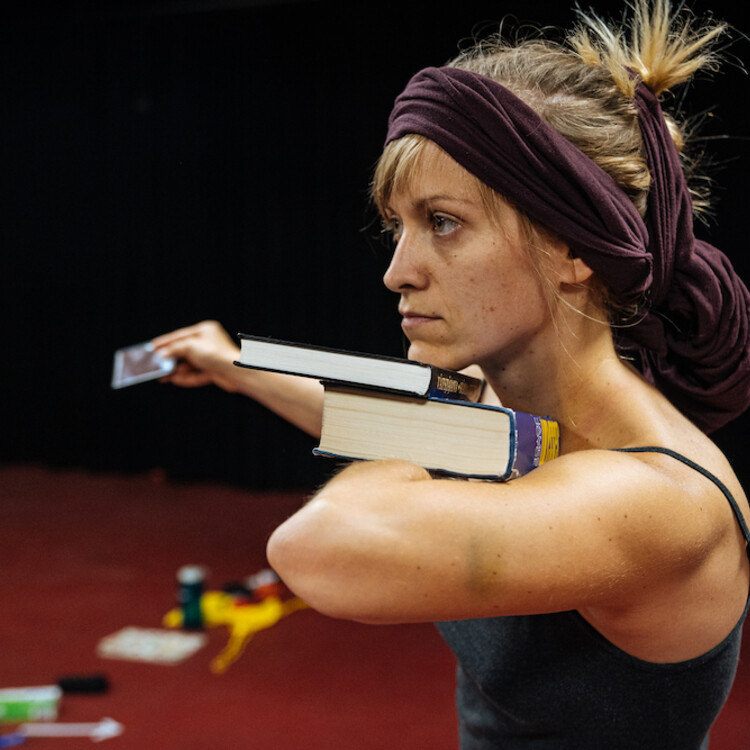
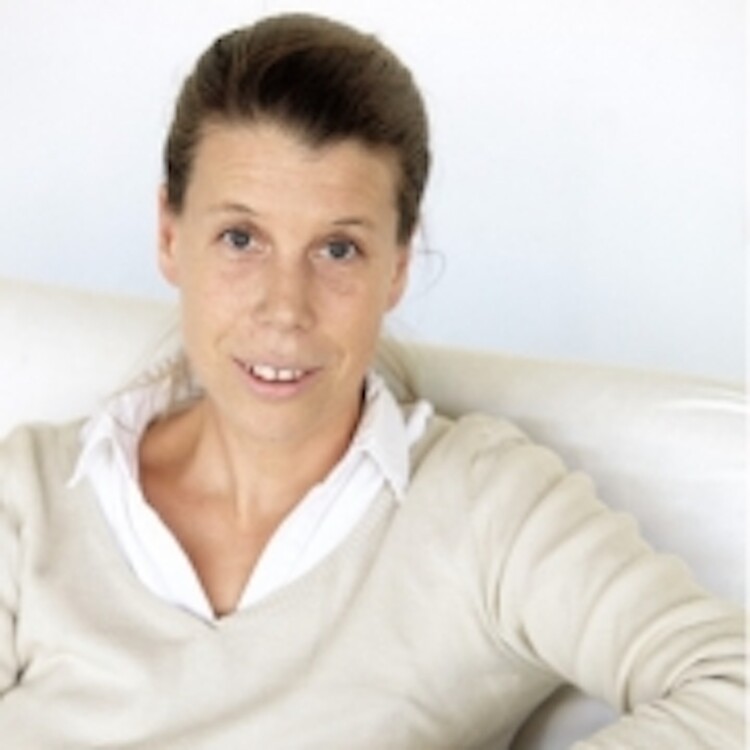
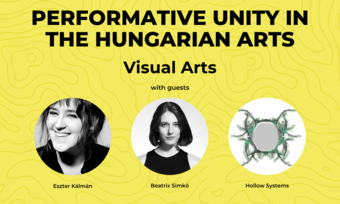





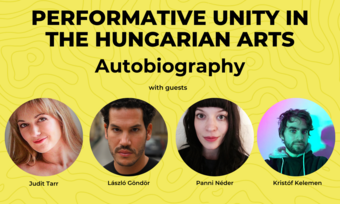




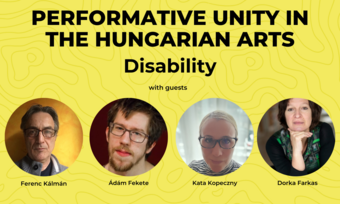




Comments
The article is just the start of the conversation—we want to know what you think about this subject, too! HowlRound is a space for knowledge-sharing, and we welcome spirited, thoughtful, and on-topic dialogue. Find our full comments policy here